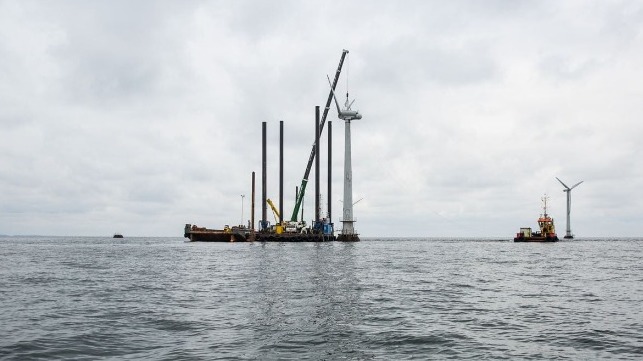Initiative to Recycle Blades from Decommissioned Wind Farms

With the anticipated rapid growth in offshore wind farms in the coming years, a new issue was raised of how to deal with blades when the turbines are decommissioned or when they become damaged. While blades are designed to have a long life, currently no plan has so far been developed for responsibly are decommissioning the blades.
As one of the leading developers of wind farms, Orsted says that currently between 85 and 95 percent of a wind turbine can be recycled, but recycling of wind turbine blades remains a challenge. The blades are designed to be lightweight, yet durable, making them challenging to break apart. Consequently, most decommissioned blades are landfilled today.
"We want to help create a world that runs entirely on green energy, and we want to do it in a sustainable way," says Mads Nipper, CEO of Orsted speaking during the company’s Capital Markets Day presentation. “That includes moving towards more circular models where we reuse resources and save energy, thereby reducing carbon emissions. That is a big challenge, but we look forward to working on this challenge together with our supply chain.”
Applying the principles of sustainability to its wind farms, Orsted announced its new commitment to either reuse, recycle, or recover all of the wind turbine blades from its onshore and offshore wind farms upon decommissioning. Should the challenge with recycling blades take longer to solve than anticipated, Orsted said it will not use landfilling for decommissioned wind turbine blades, but will instead temporarily store the blades.
Orsted has so far constructed 7.5 GW of offshore wind and 1.7 GW of onshore wind. Up until now, it has only decommissioned the offshore wind farm Vindeby in Denmark, where the blades from the 11 wind turbines were all reused. With Orsted's ambition of installing 30 GW of offshore wind and 17.5 GW of onshore energy production, including onshore wind, by 2030, Nipper said the company recognizes that it has a clear responsibility to help find solutions to the challenge of recycling blades.
"I hope that our commitment will inspire others which will help to bring scale to the market for recycling solutions of wind turbine blades, thereby accelerating the cost-out journey of the alternatives to landfilling, and help boost the already ongoing innovation in the wind energy supply chain on how to design to avoid waste."
Orsted is contributing to advance the technologies that can sustainably recycle wind turbine blades as a founding partner of the cross-sector DecomBlades consortium consisting of wind industry companies and research institutions. The consortium seeks to investigate and develop solutions to recycle the composite material in wind turbine blades. The consortium recently received three-year funding from Innovation Fund Denmark to pursue its research.
